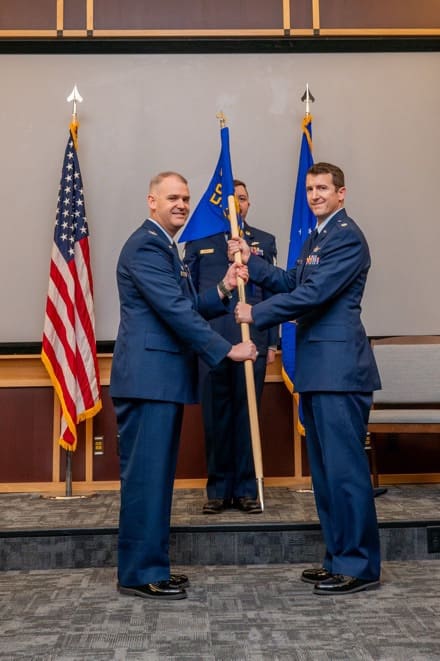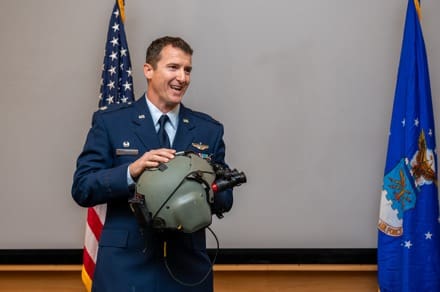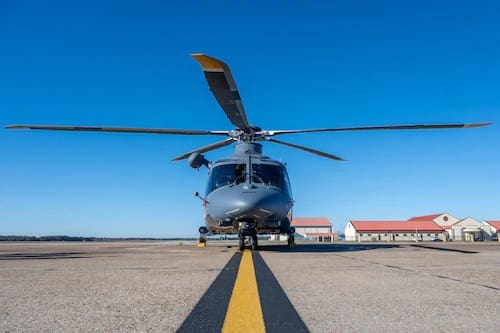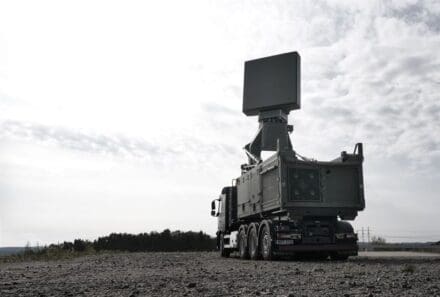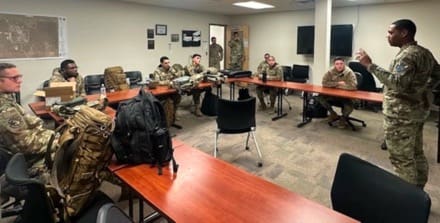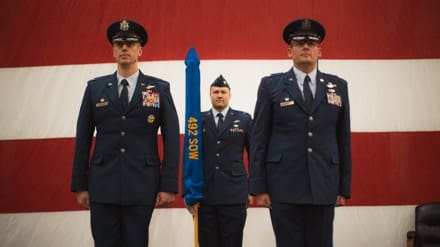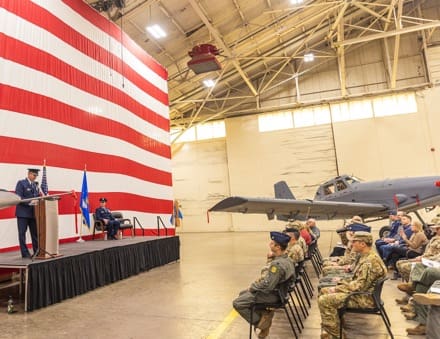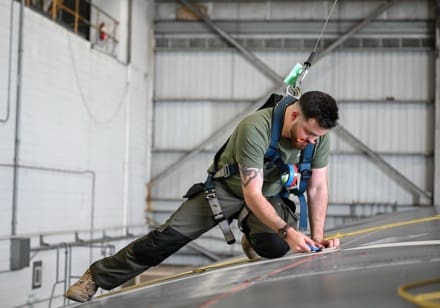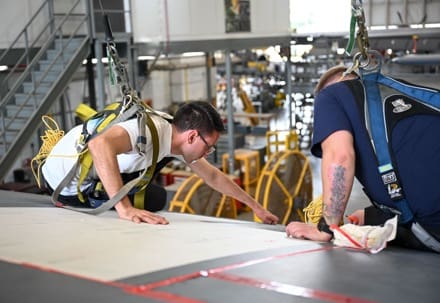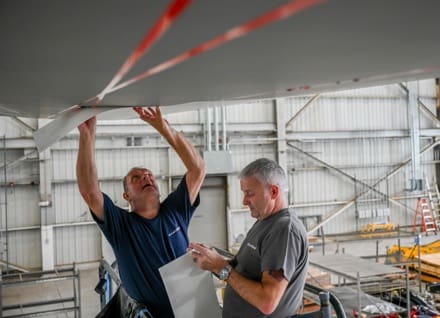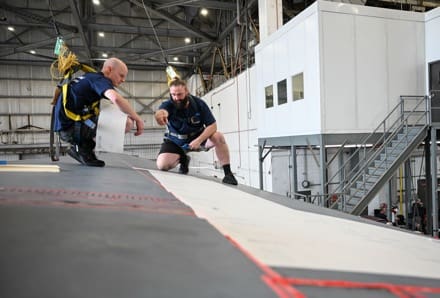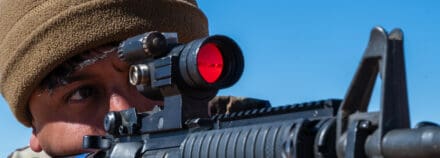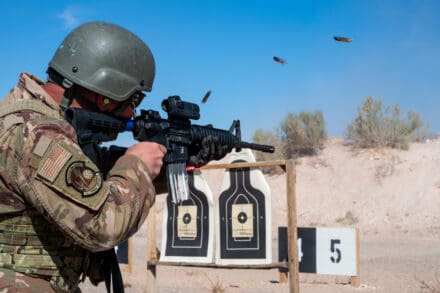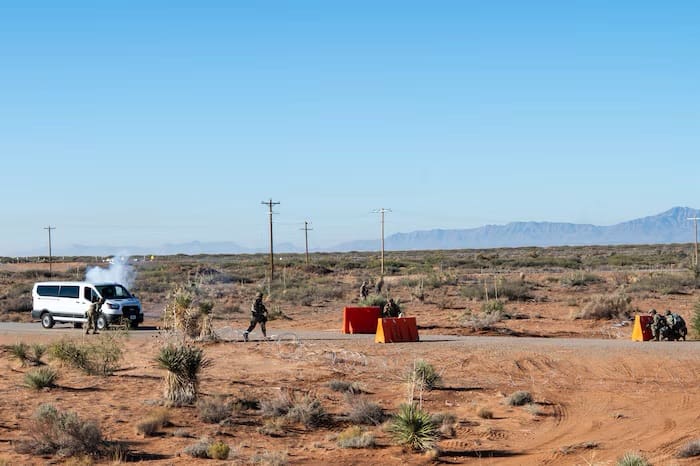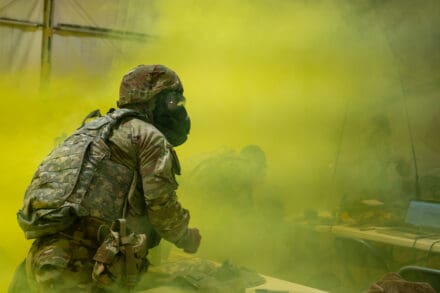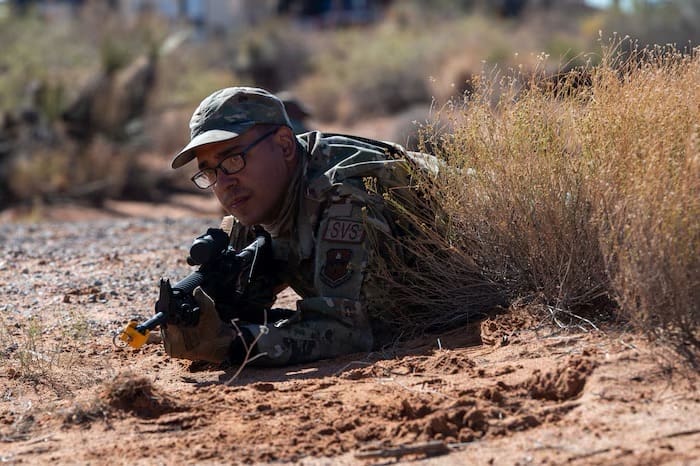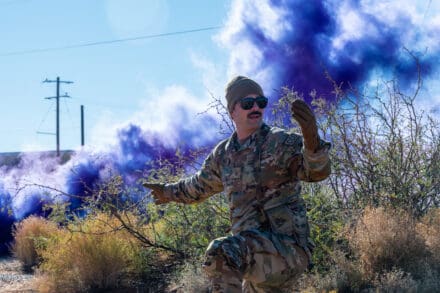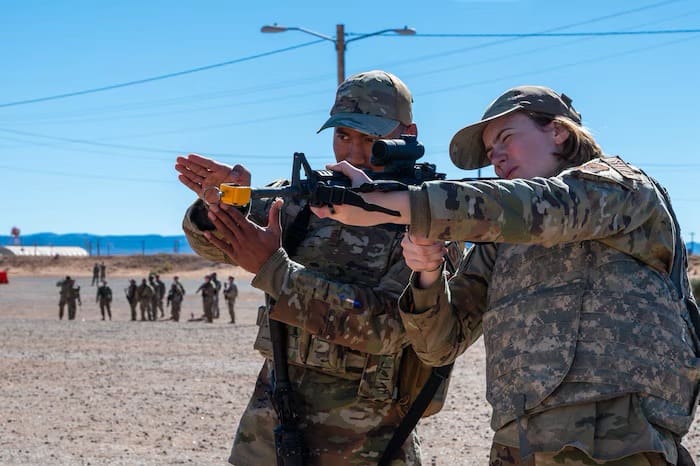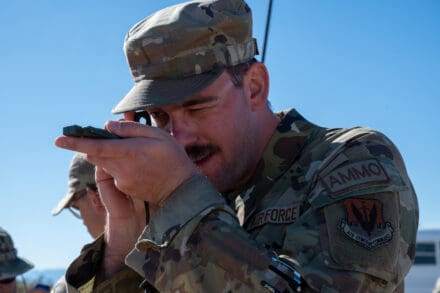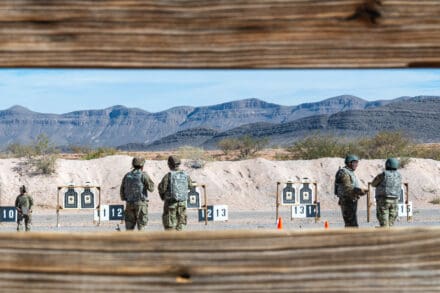YAKUSHIMA, Japan —
Close to 100 military and civilian personnel from the United States and Japan gathered at the Yakushima Town Hall Nov. 29, 2024 to attend a ceremony dedicating a cenotaph to the eight heroes who died when their CV-22B Osprey went down just off the coast of the island last year and the joint effort expended to search for and recover them.
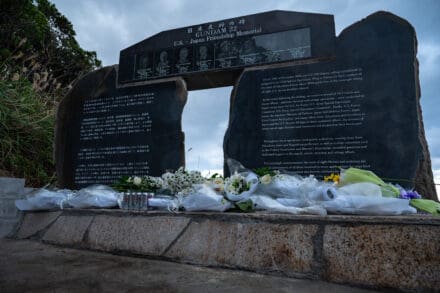
The Gundam 22 U.S. – Japan Friendship Memorial, stands more than six feet tall and holds vigil over the Toshiro beach coastline, pointing visitors towards the spot the aircraft impacted the water. One of the only U.S monuments ever erected on Japanese soil, it represents a months-long, bilateral, volunteer effort that underscored the importance of the cenotaph to the American and Japanese personnel whose actions are now memorialized in stone, alongside portraits of all eight lost crew members.
The gathering at the town hall, which included family members of the deceased, was a fitting representation of the force assembled in the direct aftermath of the mishap. One year earlier, as locals witnessed the aircraft fall from the sky, it was local fishermen who were first on the scene, retrieving the first crew member from the waves near Anbo port and respectfully standing watch over his remains. The island’s fishermen would continue to contribute to the initial search and rescue operation, helping teams locate the site of the wreckage, and facilitating the use of the port for dive and recovery teams.
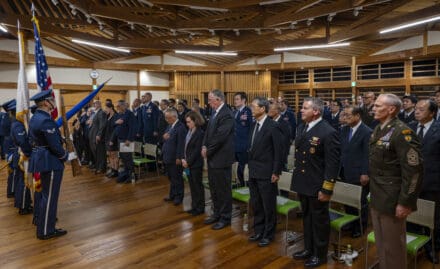
Among the first Japanese personnel on the ground in Yakushima to support the search and rescue effort was Haruo Morita, Deputy Director General, Bureau of Policies for Regional Society in the Japan Ministry of Defense. Mr. Morita would go on to stay on the island longer than any of his compatriots executing the search mission. As he delivered remarks at the dedication ceremony, he recalled the support received from the community in Yakushima.
“I would like to express our sincere appreciation to the people of the Kagoshima Prefecture and Yakushima Town, including the Yakushima Town Council and Yakushima Fishery Cooperative, for their great assistance and cooperation for 45 days, including the year-end and new year days, until January 12, 2024, when the search and recovery operations concluded.”
A ROBUST FRIENDSHIP CREATED
Yakushima Island is traditionally known for its beautiful peaks, ancient cedar woods and surreal vistas, but as the mammoth undertaking of finding and recovering the crew of Gundam 22 gained momentum and more personnel and equipment converged on the 500 square-kilometer island, this quiet community was about to be thrust into the international spotlight for a much different reason.
“It is an undeniable fact that although in the midst of tragedy of the Osprey mishap, a robust friendship was created between the U.S. Forces and the Yakushima Community. I am certain that continuing to establish such a trusting relationship between our two countries will further strengthen our alliance.”
Morita’s words found truth in the make-up of the dedication gathering, which included U.S. Deputy Chief of Mission in Japan, Chargé d’affaires Katherine Monahan alongside Yakushima Town’s Mayor Koji Araki, Kagoshima Prefecture assemblymen, Yasuhiro Matsuzato and Shigeru Hidaka, and senior leaders from the Japan Self Defense Forces and multiple branches of the U.S. military.
Of those gathered, few were as intimately acquainted with the mission to recovery the lost Airmen and the wreckage of their craft as Rear Adm. Jeromy Williams. Williams, commander of Special Operations Command Pacific, received twice daily briefings on the progress of the search, recovery, and salvage efforts for over 45 days while operations persisted on the island. He witnessed the scope and impact of our Japanese partners’ contributions to the search.
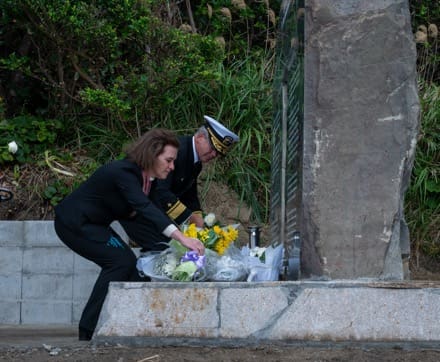
“Overall, 21 Japanese Coast Guard and Navy ships came to our aide. Japan Coast Guard employed unmanned underwater vehicles, ROVs, and divers. Japan Ground Self Defense Forces employed helicopters, activated reservists, and searched the cliffs, beaches, and shorelines. Japan Air Self Defense Force sent aircraft, while police, business owners, local volunteers, the Fisherman’s Association, and Yakushima Woman’s association all remained determined in the search.”
MARKER OF A FINAL RESTING PLACE
Altogether, U.S. and Japanese forces searched 60,000 sq kilometers of water, 89 kilometers of Yakushima coastline and another 30 kilometers of coastline on neighboring Tanegashima, and 39 square kilometers of ocean floor. In just shy of two months, their search turned up 321 objects, and the remains of 7 crew members. The eighth, Maj. Eric Spendlove, has yet to be recovered, according to Mr. Morita a source of “deep regret” for the Japanese partners involved in the search. The cenotaph on the island now serving as a marker of his final resting place.
Instrumental to making the cenotaph a reality was Maj. Jake McCauley of the 353rd Special Operations Wing. One of the first Americans on the ground last November, he served as mission commander for the search, rescue, and recovery.
“It was a huge undertaking from the time we got here to when we finally closed the [Joint Operations Center]. Once it was coming to a close, we knew we wanted to do something here to thank the community for the help they gave us, and to honor the heroes we lost. Having a permanent place here for their families and the SOW to come and remember them and pay respects is awesome.”
For McCauley, the journey from search and rescue to the dedication of the cenotaph has represented a full circle experience, providing closure for him and many of the men and women involved in the operation. In the days leading up to ceremony, McCauley and more than a dozen volunteers from Kadena Air Base and Yokota Air Base engaged in beach clean-ups and beautification of the area around the cenotaph site.
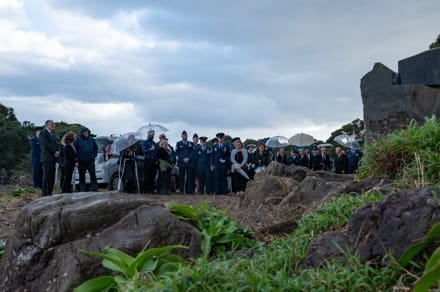
“A PHYSICAL ARTIFACT OF A ROCK-SOLID BOND”
The monument itself is an extension of Yakushima, built by local craftsmen from monolithic stones taken from the same jagged shorelines where the crew of Gundam 22 met their fate. Across the top of the structure, eight portraits, chosen by the heroes’ families, are etched into the stone alongside their ranks and names. They’re held up on each side by two massive stone pillars each with inscriptions, one in English, the other in Japanese. They detail the crash, the scope of the search and rescue operations, and the contributions of the Yakushima Town community.
The inscription reads:
On the 29th of November 2023, one CV-22B Osprey, callsign GUNDAM 22, assigned to the 353d Special Operations Wing at Yokota Air Base, crashed off the coast of Yakushima Island, about 1KM northwest of this cenotaph, killing all eight U.S. service members aboard.
In the weeks following the mishap, an intensive period of 24/7 search and rescue efforts –and later recovery and salvage operations –were conducted by expert teams from the U.S. Air Force, U.S. Army Special Operations Command, U.S. Navy, Special Operations Command –Pacific, U.S. Forces Japan, the Japanese Ministry of Defense, Japan Self Defense Forces, Japan Coast Guard, local police, and many others from Yakushima and elsewhere in Japan and the U.S. In over 40 days of these combined efforts, the remains of seven out of eight Airmen were recovered and returned to their loved ones.
Throughout these operations, local public authorities, notably those from Yakushima town and Kagoshima prefecture, as well as civilian volunteers such as the Fishery Association and Women’s Association, extended generous and dedicated support to the search, rescue, recovery, and salvage efforts.
This cenotaph commemorates the souls of eight Heroes and enshrines the eternal commitment of all those involved to never again endure the same kind of mishap. May this monument also forever celebrate the steadfast friendship forged between U.S. Servicemembers and the people of Kagoshima who so warmly offered their unwavering support and partnership in our darkest days of shared tragedy.
Looking out to the ocean, the pillars and crossbeam frame a small area of the water, just shy of a kilometer away from the island’s lone airport, where the fateful flight ended.
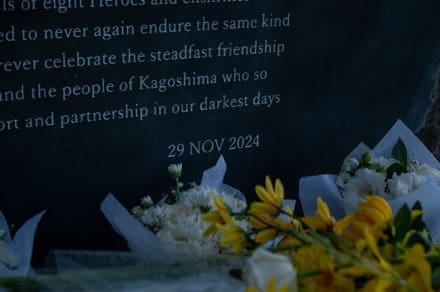
Rear Adm. Williams, in his remarks at the town hall, summarized the symbolism of the cenotaph:
“Today’s dedication provides a physical artifact of the rock-solid bond between Japan and the United States. It memorializes the faces of our fallen heroes, and records for posterity the benevolence of our Japanese allies. The memorial stands watch over the waters that are the final resting place of our last missing teammate. It will serve as inspiration for generations to come that in our darkest hours, Japan and America will stand strong together.”
As the sun rose over the monument the day after the ceremony, it was evident that the Yakushima community had already embraced it, just as they had embraced the U.S. service members who came to their island a year ago. Groups of school children, elderly couples, and individual visitors came steadily throughout the morning, leaving traditional Japanese offerings, taking pictures, and praying. A day earlier, commander of the 353rd SOW, Col. Shawn Young said to the audience gathered at the dedication, “My hope is that this can now be a place of healing for two communities – American and Japanese together – who experienced this loss not just as allies, but as family.”
In memoriam: the crew of Gundam 22:
U.S. Air Force Maj. Jeffrey T. Hoernemann, 32, of Andover, Minnesota, was a CV-22 instructor pilot and officer in charge of training, assigned to the 21st Special Operations Squadron, 353rd Special Operations Wing, Yokota Air Base, Japan.
U.S. Air Force Maj. Eric V. Spendlove, 36, of St. George, Utah, was a residency trained flight surgeon and medical operations flight commander assigned to the 1st Special Operations Squadron, 353rd Special Operations Wing, Kadena Air Base, Japan.
U.S. Air Force Maj. Luke A. Unrath, 34, of Riverside, California, was a CV-22 pilot and flight commander assigned to the 21st Special Operations Squadron, 353rd Special Operations Wing, Yokota Air Base, Japan.
U.S. Air Force Maj. Terrell K. Brayman, 32, of Pittsford, New York, was a CV-22 pilot and flight commander assigned to the 21st Special Operations Squadron, 353rd Special Operations Wing, Yokota Air Base, Japan.
U.S. Air Force Tech. Sgt. Zachary E. Lavoy, 33, of Oviedo, Florida, was a medical operations flight chief assigned to the 1st Special Operations Squadron, 353rd Special Operations Wing, Kadena Air Base, Japan.
U.S. Air Force Staff Sgt. Jake M. Turnage, 25, of Kennesaw, Georgia, was a flight engineer assigned to the 21st Special Operations Squadron, 353rd Special Operations Wing, Yokota Air Base, Japan.
U.S. Air Force Senior Airman Brian K. Johnson, 32, of Cincinnati, Ohio, was a flight engineer assigned to the 21st Special Operations Squadron, 353rd Special Operations Wing, Yokota Air Base, Japan.
U.S. Air Force Staff Sgt. Jacob “Jake” M. Galliher, 24, of Pittsfield, Massachusetts, was a Direct Support Operator assigned to the 43rd Intelligence Squadron, Detachment 1, Operating Location – Alpha, 363rd Intelligence, Surveillance, and Reconnaissance Wing, Kadena Air Base, Japan. 43 IS Det 1 OL-A is a tenant unit in support of the 353rd Special Operations Wing.
By Capt Richard Caesar, 353rd Special Operations Wing
